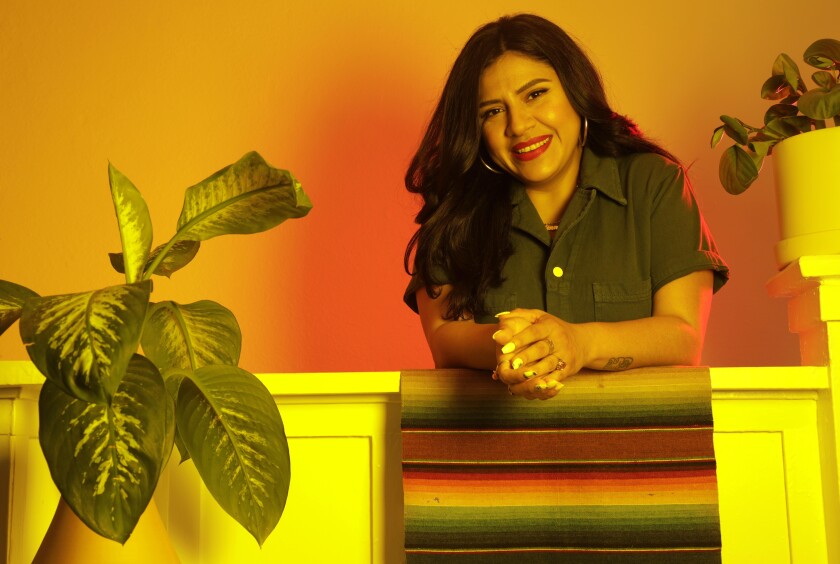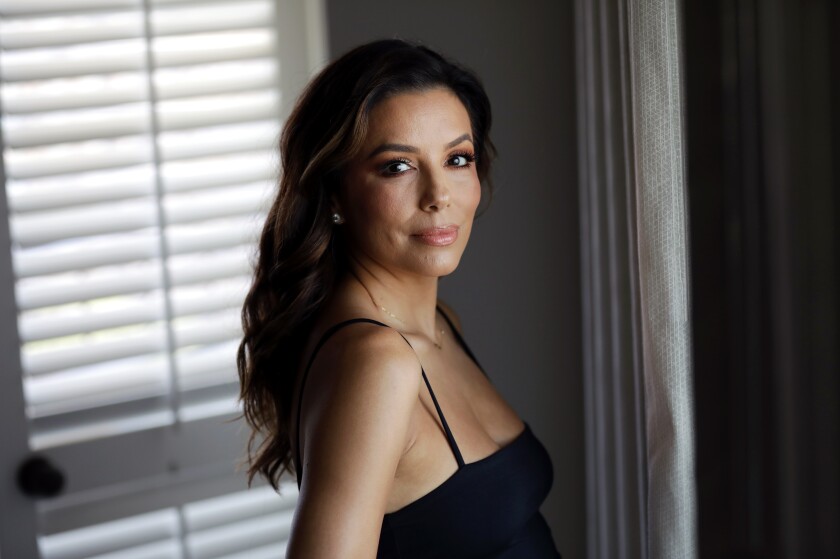Melinna Bobadilla identifies as a “working actor” who has had a reasonably successful early career. In 2017, she landed the part of Bertha in the Luis Valdez revival of “Zoot Suit” at the Mark Taper Forum. Then she got a recurring role in the final season of “Orange Is the New Black” (playing an Indigenous migrant stuck in detention at an Immigration and Customs Enforcement facility) and appeared in a key episode of the Apple+ immigrant anthology series “Little America.” She also has a part in the upcoming second season of the Netflix darling “Gentefied.” And she starred in the short “For Rosa,” portraying one of the real-life women sterilized without full consent at Los Angeles County General Hospital in the 1970s. It’s now streaming on HBO Max.
But there are certain roles the Lincoln Heights native with degrees from UC Berkeley and New York University has trouble landing. They are the neutral roles with no race or ethnicity identified.
“When I have auditioned for those roles, I end up watching the show or the film, and it’s defaulted to white,” Bobadilla says. “So it makes me wonder if there is just lip service being paid to equity and diversity in casting. It’s really easy to hide behind ‘Well, it’s just the best person for the job.’”

Melinna Bobadilla at her home in Los Angeles: “I’m not a fan of saying, ‘Where’s our equivalent of this Black show? Or this Asian show?’ There’s not enough representation when it comes to Black actors and Black executives. ... Are we just conforming to bilingual whiteness?”
(Genaro Molina / Los Angeles Times)
It’s fallen to creators of color to make room for actors like Bobadilla.
Kumail Nanjiani, co-creator of “Little America,” set out to tell original stories of immigrants by hiring writers, directors and actors of color. Bobadilla’s episode, directed by Aurora Guerrero, is about a high schooler whose immigration status affects her college prospects. The Boyle Heights drama “Gentefied,” headed by co-creators Marvin Lemus and Linda Yvette Chávez, has been praised for showcasing a rainbow of up-and-coming Chicano, Central American and California-rooted artists who are part of a generation pushing for richer representation at studios and media companies.
Increasingly — and also posing new challenges — actors and audiences in Bobadilla’s generation tend to want their entertainment to reflect or match their values. Bobadilla, who described herself as Chicana, says she chooses roles with awareness of her “positionality.” She said she struggled with deciding to play the “Orange Is the New Black” character identified as Maya Kʼicheʼ, because she is not a member of that specific Indigenous group.
“I’m not a fan of saying, ‘What about us? Where’s our equivalent of this Black show? Or this Asian show?’ I would still say there’s not enough representation when it comes to Black actors and Black executives,” Bobadilla said. “Are we just conforming to bilingual whiteness? Again, that’s erasure. I’m interested in disenfranchising white supremacy in all its facets.”
For that, she finds inspiration in two trailblazing models: Viola Davis and Sandra Oh.
“I look to them and I feel a connection, and I feel empowered in a way that I do not feel when I see a white Latin American person simply because they have a Spanish surname,” Bobadilla said. “That’s not sufficient for me.”
Longoria stressed that even with the diversity of races and backgrounds that count as Latino, unity is needed.
“Do we have collective power if we ourselves are segregating? ‘I’m not Cuban; I don’t want to watch that show. I’m not Mexican; I don’t want to watch that show,’” Longoria said, echoing some reactions to shows among viewers. “Our community has a responsibility to show up, as well. We need everybody to keep their foot on the gas.”
She’d like to see more recruitment of Latino executives, agents, producers, casting directors, technicians of every sort: “You want someone in the DNA of those companies, and in those rooms, that understands the community.”

Eva Longoria: “I don’t need another statistic. I get it.”
(Christina House / Los Angeles Times)
“We all want diversity; the industry wants it too, but they’re also spending a lot of money, so they want the product to generate revenue,” said director and writer Michael D. Olmos, a son of Edward James Olmos. “It’s all those things. It’s a horse-or-buggy thing.”
Co-director of the 2012 breakout hit “Filly Brown” with Gina Rodriguez and the late Jenni Rivera, the younger Olmos said the industry he has pursued can often be a “meritocracy,” but it is also a “referral industry,” in which connections matter most of all. And making those connections can be tough.
This is partly why the elder Olmos founded the Youth Cinema Project, which teaches fourth-graders how to make their own movies. He wants to address the so-called “pipeline” issue at the earliest stage.
Flavio Morales, an executive vice president at the distribution and production company Endemol Shine Latino, argues that a flood of “lowbrow” Latino content is one answer to the idea that if more people of color work as grips, costume designers, camera operators, editors or production assistants, the pool of future directors and film pioneers naturally grows.
“Look at the Blaxploitation movement,” he said of the often-dismissed films. “We got line producers, writers, directors. We need our Blaxploitation movement, and we need our Roger Corman. How are we going to get better if we don’t practice? We just need more things on the screen. More, more, more.”
Others express admiration for the way Black creatives such as “Girls Trip” producer Will Packer have leveraged decades of collective organizing and pressure to break old molds in the industry.
“We have to start projecting that light,” said producer George Salinas, a native of South Los Angeles. “There was a certain stereotype for African Americans before Tyler Perry, before the Will Packers out there, and all these guys who just elevated the storytelling for African Americans. Now you see them portrayed as doctors and important lawyers, and that’s fantastic. And that’s what we’re trying and going for.”
“It is up to us to tell our own stories,” Olmos said in his congressional testimony. “And we will.”
"Hollywood" - Google News
June 13, 2021 at 08:00PM
https://ift.tt/2RR2iqj
Why aren't there more Latinos in Hollywood movies and TV? - Los Angeles Times
"Hollywood" - Google News
https://ift.tt/38iWBEK
Shoes Man Tutorial
Pos News Update
Meme Update
Korean Entertainment News
Japan News Update
Bagikan Berita Ini















0 Response to "Why aren't there more Latinos in Hollywood movies and TV? - Los Angeles Times"
Post a Comment